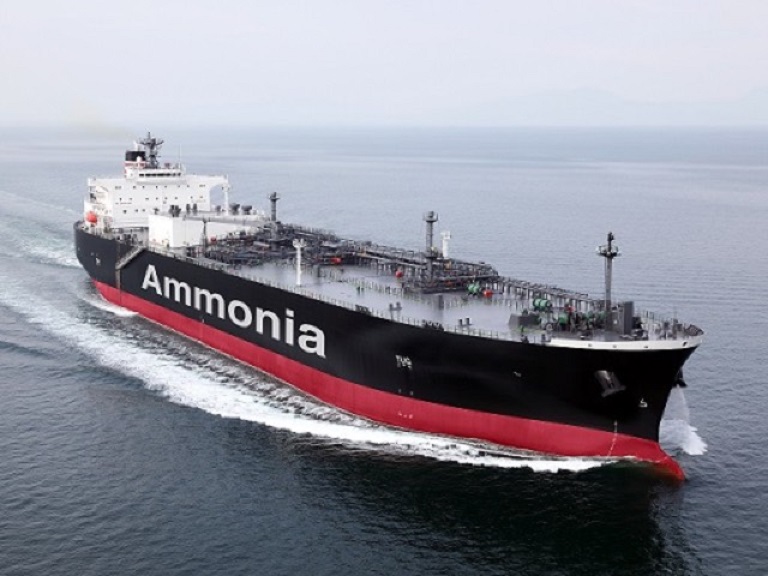A.P. Moller - Maersk A/S, Fleet Management Limited, Keppel Offshore & Marine, Maersk Mc-Kinney Moller Center for Zero Carbon Shipping, Sumitomo Corporation and Yara International ASA announce that the parties have entered into a Memorandum of Understanding to jointly conduct a feasibility study (hereinafter “Study”) with the aim to be one of the pioneers in establishing a comprehensive and competitive supply chain for the provision of green ammonia1 ship-to-ship bunkering at the Port of Singapore, the largest bunkering port in the world.

Emitting zero CO2 when combusted, ammonia has long been considered as one of the most promising alternative marine fuels to reduce greenhouse gas (GHG) emissions within the shipping industry, which is in line with the International Maritime Organization (IMO) strategy to reduce CO2 emission by 2050. In particular, green ammonia possesses great potential as it is produced from only renewable electricity, water and air with no CO2 emission.
The Study aims to cover the entire end-to-end supply chain of ammonia bunkering, which includes the development of a cost-effective green1 ammonia supply chain, design of ammonia bunkering vessels, as well as related supply chain infrastructure. Relevant government agencies and experts in Singapore will be engaged in working towards the standardization of safe operation and regulations. The study will assess the supply of ammonia including potential synergies with Liquefied Petroleum Gas (LPG) as a starting point. Considering the comparable requirements for mild refrigerated storage, vessels or barges initially designed for LPG can also handle brown3, blue2 and green1 ammonia.
Mr Morten Bo Christiansen, VP and Head of Decarbonisation at A.P. Moller-Maersk, said “Alongside Methanol, at A. P. Moller-Maersk we see green ammonia as an important future fuel for the decarbonisation of our fleet. A dual fuel Ammonia engine is currently under development, but for green ammonia to fuel our vessels in the future we also have supply, infrastructure and safety related challenges to solve, not least when it comes to bunkering operations. We are pleased to work with renowned companies in this field to pave the way for Ammonia as a future fuel to decarbonise global shipping.”
Mr Kishore Rajvanshy, Managing Director at Fleet Management, said “We are very pleased to support the development of the green transition pathway for our industry. We participate with our technical expertise across ship types to provide holistic solutions to sustainability, and alongside other alternative fuels such as methanol we feel ammonia will play a significant role”.
Mr Chris Ong, CEO of Keppel Offshore & Marine, said, “There are multiple routes to the decarbonisation of the marine industry and we are pleased to be able to leverage our expertise in engineering and bunkering to spearhead the development of cleaner marine fuels such as ammonia. This includes the design of ammonia bunkering and ammonia-powered vessels, as well as developing the value chain necessary for the adoption of ammonia. This is in line with Keppel’s Vision 2030, which includes seizing opportunities in new energy.”
“It is key to understand the complete life cycle and safety implications of any future fuel across the supply chain. This project will address gaps in infrastructure and regulation and bring forward the solutions needed for safe operations and bunkering of ammonia in ports. We truly look forward to the collaboration and to contribute to this important work”, said Mr Bo Cerup-Simonsen, CEO of Maersk Mc-Kinney Moller Center for Zero Carbon Shipping.
“With this MoU, we embark on our ambition to build the world's first Ship-to-Ship ammonia bunkering base, which highlight our commitment to offer our customers the best available and technologically proven solution to reduce the emission footprint from maritime transport,” said Mr Hajime Mori, executive officer of Sumitomo Corporation.
Mr Magnus Ankarstrand, EVP of Yara Clean Ammonia, said “Ammonia as energy carrier is an enabler of the energy transition and we recognize the need for value chain collaboration to make zero emission shipping by using ammonia as a fuel a reality.”
1 Green ammonia: Carbon-free ammonia synthesized from nitrogen and carbon-free hydrogen produced from renewable energy.
2 Blue ammonia: Carbon-neutral ammonia produced from natural gas, with the CO2 produced from the processes captured and prevented from entering the atmosphere.
3 Brown ammonia: Conventional ammonia produced from natural gas.
4 Ammonia-ready LPG bunkering vessel: LPG bunkering vessel, which can be modified and converted into ammonia bunkering vessel in the future.